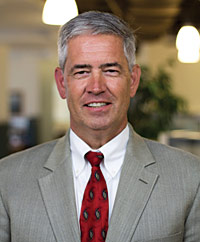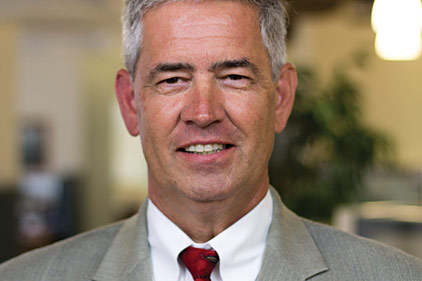The Air-Conditioning, Heating, and Refrigeration Institute (AHRI) and North American Technician Excellence (NATE) recently announced the appointment of John Lanier as NATE’s new chief operating officer (COO).

|
| John Lanier was recently named chief operating officer for North American Technician Excellence. |
Lanier, 54, has held a number of executive positions, including senior vice president of operations for the National Federation of Independent Businesses (NFIB), which has more than 400,000 members.
“Throughout my career, I have had the opportunity to work with a variety of teams with the ultimate goal of delighting customers,” Lanier said. “To that end, I recognize the need for not only a high attention to detail, but also the value of strong strategic planning and execution.”
Lanier, who is already settling into his new position, said he will continue to work “to ensure growth and progress at NATE and further its role in certifying the most knowledgeable, well-trained, and highly experienced technicians in the HVACR industry.”
Coming to NATE
Lanier grew up in a small suburb of Minneapolis and earned his bachelor’s degree in economics from the University of Minnesota. He also completed an executive education program at Kellogg School of Management, Evanston, Ill., and is currently working on attaining his MBA.
His educational expertise, coupled with his real-world experience running organizations similar to NATE, has helped prepare him for his current position, he said.
“Economics is the study of the interaction between production, distribution, and the consumption of goods and services,” Lanier explained. “As NATE plays an integral role in the HVACR community with manufacturers, distributors, contractors, and consumers, it will be important to leverage the relationships and synergies between all of these players.”
Don Frendberg, chairman, NATE, who performed many of the COO duties prior to Lanier’s appointment, agreed that Lanier’s educational and professional background make him a valuable addition to the organization.
“He’s a really talented individual,” Frendberg said. “His experience and excellent background in business, including HVACR sales, makes him a great fit for where NATE is heading in the future.”
AHRI president and CEO Stephen Yurek also welcomed Lanier to the organization’s ranks in a June 14 press release.
“We are very pleased to have someone with John’s experience and drive taking the reins at NATE,” Yurek said. “I know that our member companies and others in the industry are eager to work with John to ensure growth and progress at NATE at a critical juncture in its history.”
The Future of NATE
As COO, Lanier is already well aware of the issues facing NATE and the industry in general, including the looming shortage of qualified HVAC technicians.
“We’ve all seen the statistics that the demand for qualified technicians is going to outpace the supply in the next few years,” he said, adding that “technology will continue to impact how equipment is repaired and serviced, and greater technical education will be required to enter the industry.”
Luckily, he said, NATE has a plan to try to close the gap between the number of technicians who are qualified and the number of jobs that need to be filled.
“We plan to increase our outreach to training organizations and employers to help more technicians find the training they need to enter the industry, seek and maintain certification, and become more marketable to employers,” he said. “NATE has begun to administer the Industry Competency Exams, or ICE exams, to measure basic competency and certification for entry-level technicians with one year or less of experience. We see a great opportunity here to help define a career path for technicians from ICE certification to NATE certification and beyond for those interested in HVACR.”
Frendberg agreed that getting more technicians certified — and recertified — is NATE’s priority.
“Our goal is to increase the number of technicians — it’s not to sell more exams,” Frendberg said. “Our technicians recertify every five years. How do we make it so it’s not a burden, but something they want to do?”
Other goals, Lanier said, include making NATE testing and certification more accessible as well as increasing consumer awareness. “We must continue to work to advance NATE’s position to the HVACR industry and consumers by ensuring the certification program is relevant and accessible, increasing industry and consumer awareness of the benefits of NATE-certified technicians, and advocating for NATE with relevant government agencies,” Lanier said.
He added, “I look forward to working with our team here at NATE as we execute an effective plan to serve the HVACR industry and homeowners.”
Publication date: 7/1/2013
Want more HVAC industry news and information? Join The NEWS on Facebook, Twitter, and LinkedIn today!


Report Abusive Comment